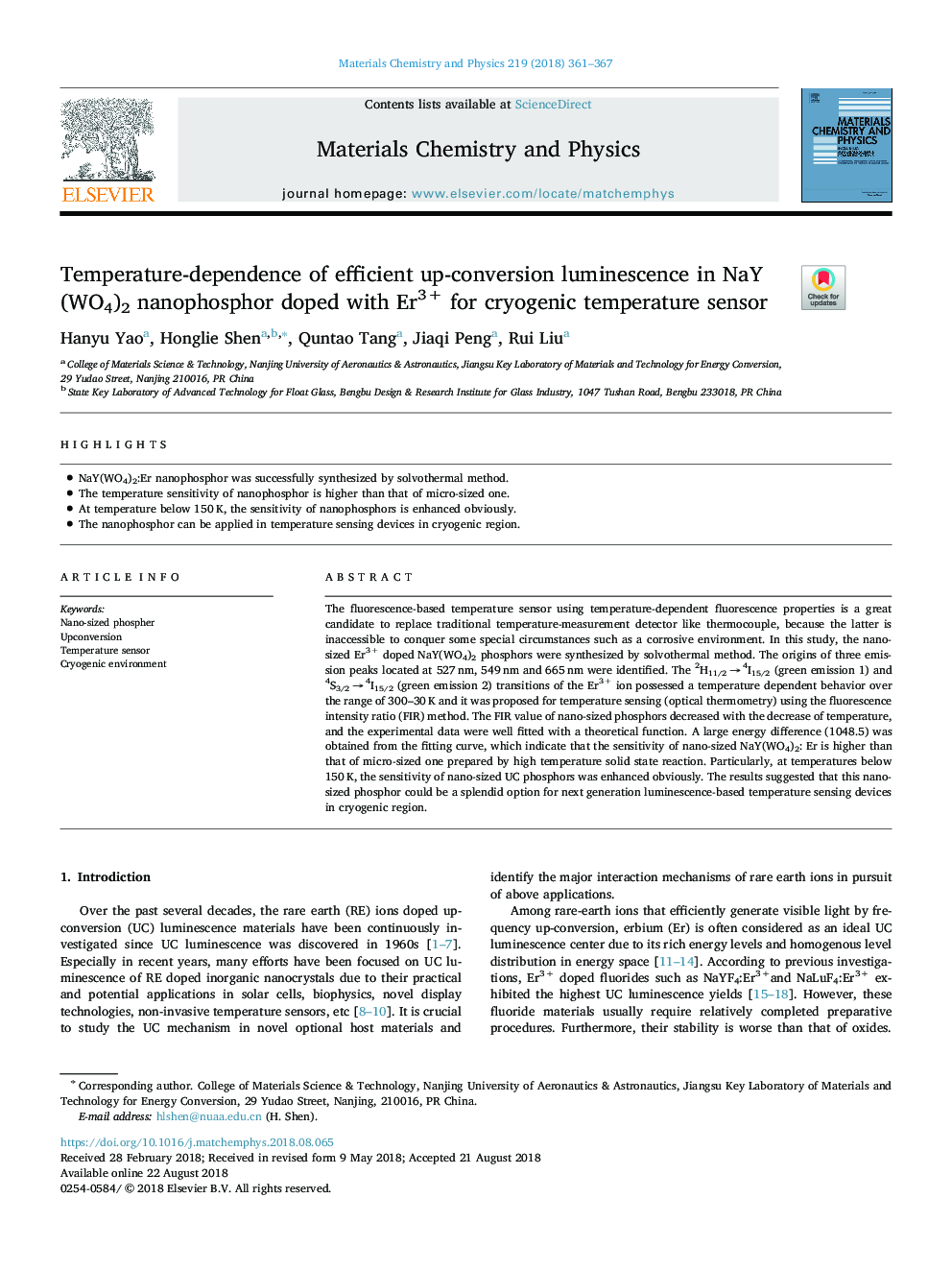| Article ID | Journal | Published Year | Pages | File Type |
|---|---|---|---|---|
| 11006878 | Materials Chemistry and Physics | 2018 | 7 Pages |
Abstract
The fluorescence-based temperature sensor using temperature-dependent fluorescence properties is a great candidate to replace traditional temperature-measurement detector like thermocouple, because the latter is inaccessible to conquer some special circumstances such as a corrosive environment. In this study, the nano-sized Er3+ doped NaY(WO4)2 phosphors were synthesized by solvothermal method. The origins of three emission peaks located at 527â¯nm, 549â¯nm and 665â¯nm were identified. The 2H11/2â¯ââ¯4I15/2 (green emission 1) and 4S3/2â¯ââ¯4I15/2 (green emission 2) transitions of the Er3+ ion possessed a temperature dependent behavior over the range of 300-30â¯K and it was proposed for temperature sensing (optical thermometry) using the fluorescence intensity ratio (FIR) method. The FIR value of nano-sized phosphors decreased with the decrease of temperature, and the experimental data were well fitted with a theoretical function. A large energy difference (1048.5) was obtained from the fitting curve, which indicate that the sensitivity of nano-sized NaY(WO4)2: Er is higher than that of micro-sized one prepared by high temperature solid state reaction. Particularly, at temperatures below 150â¯K, the sensitivity of nano-sized UC phosphors was enhanced obviously. The results suggested that this nano-sized phosphor could be a splendid option for next generation luminescence-based temperature sensing devices in cryogenic region.
Related Topics
Physical Sciences and Engineering
Materials Science
Electronic, Optical and Magnetic Materials
Authors
Hanyu Yao, Honglie Shen, Quntao Tang, Jiaqi Peng, Rui Liu,
